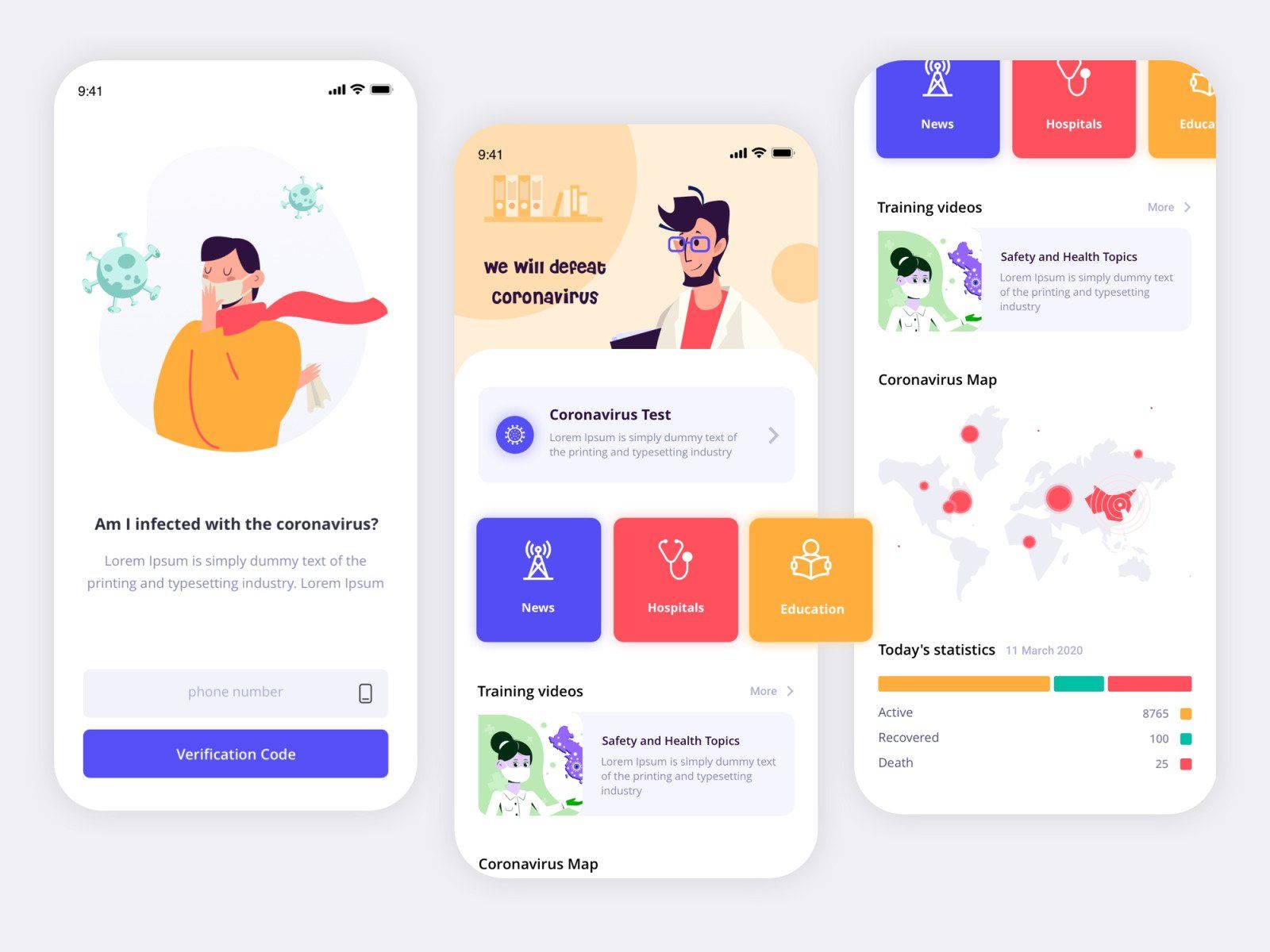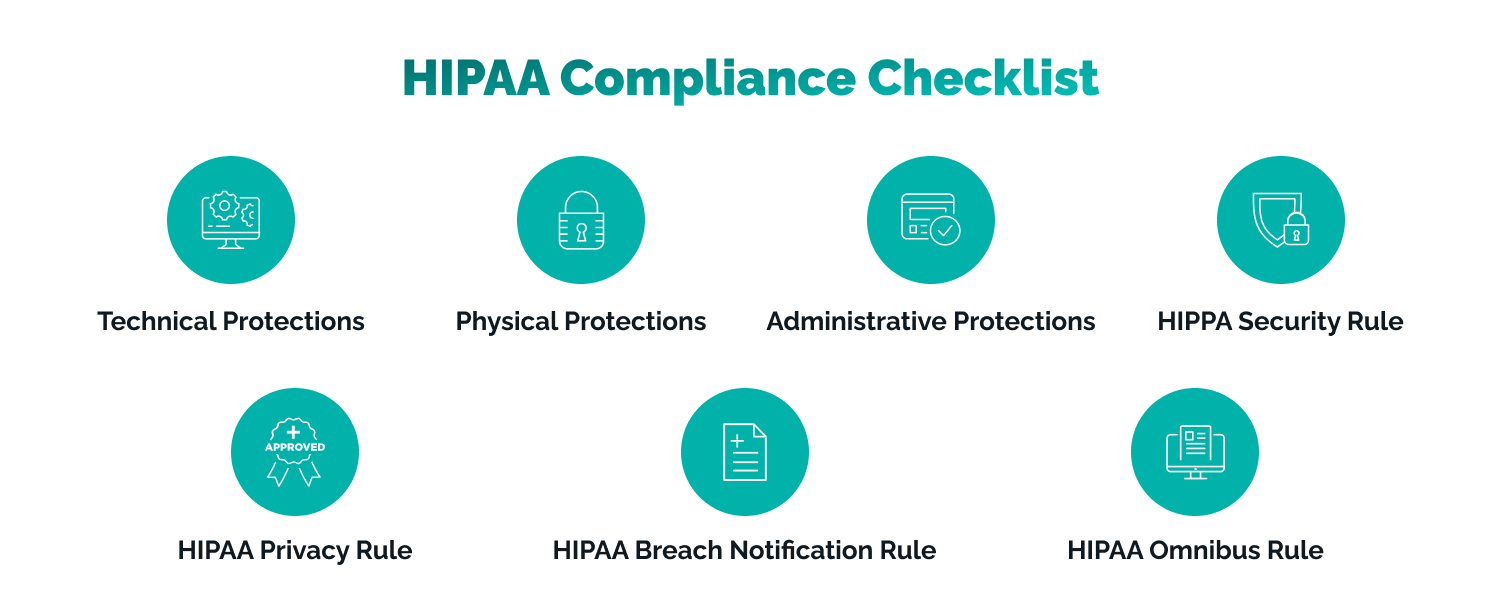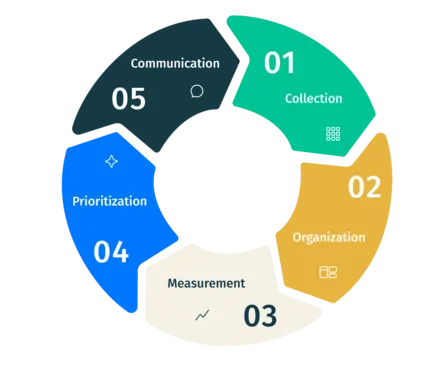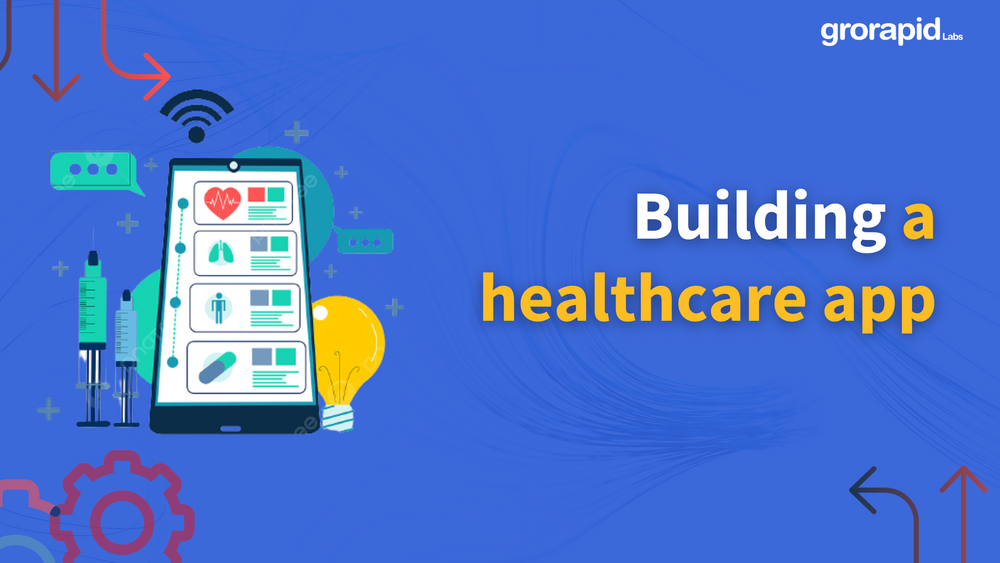Mobile app development: Building a healthcare app
In the recent past, the need for immediate access to healthcare professionals has become an essential requirement. The year 2022 was like a wormhole, and healthcare apps came to the rescue with a market size of USD 56.27 billion. The world has seen a surge of trustworthy medical apps that provide live consultation and medicine prescriptions along with delivery services in a span of a year, such as Practo, TATA 1Mg, Pristyn Healthcare, etc.
In order to build a safe and reliable healthcare app, you need to answer a few important questions first:
- What is the overall purpose?
- What will be the USP feature of the app?
- How much time and budget are you willing to dedicate to the app?
How do you want to build this app: No-Code or Custom Code?
First, you must determine the type of application you plan to create. The choice will depend on the complexity, budget, and features offered in the app.
No-Code
No-Code platform involves building an app without using code, relying solely on visual tools or templates. As it lacks the finer details, it is suitable for apps that have primarily one function, such as a medication reminder app.
Custom code
Custom Code means developing from scratch. It helps to create an application with intricate and precise details by using Kotlin, React Native and Golang. It might require more technical expertise; for instance, TATA 1 Mg offers multiple features and was developed from scratch because of the magnitude of the services provided.
Making the choice
Once you clearly understand the type of application you aim to create, it's crucial to delve into the finer details that significantly contribute to its success. This includes determining the programming language and identifying the APIs you wish to integrate. You must carefully examine and select the tools and technologies needed for both front-end and back-end development.

If you are still confused which one will be the best option for you, let's connect and discuss over a free tech consultation call.
Why is a user-friendly interface important?
The effortless navigation and accurate information provided by the app are the two determinants of the customer experience, which eventually decide whether or not you have a user-friendly interface by keeping in mind all the target audiences with different age groups and specially-abled citizens.
To achieve this, meticulous design details come into play: fonts are chosen for clarity, touch areas are expanded to accommodate varied proficiency levels, and soothing colour palettes are employed.
To truly refine the app and make it more user-friendly, several usability tests have to be conducted from time to time, along with feedback. With all this feedback and easy navigation, a larger audience can be served.
How to select the right technologies for Healthcare app development?
This is the stage where ideation begins along with the execution. Challenges and problems faced drive the pool of ideas. The discussion must include an engaging user experience. The goal is to create an app catering to the majority of the audience and easy to understand eventually making it straightforward to navigate.
Frontend development
Front-end and back-end development are crucial aspects of modern software applications. The front end mainly focuses on user interface design utilising popular frameworks such as React Native and Flutter. These aid in creating interactive, responsive, and visually appealing user experiences across multiple platforms.
Backend development
On the other hand, the back-end involves server development, database management, hosting, and cloud services. Common technologies include Node.js and Ruby on Rails for server-side operations, along with MySQL and MongoDB for database management. Hosting and cloud providers like AWS, Azure, and Google Cloud ensure reliable service distribution.
Integrating healthcare standards
These healthcare standards refer to the already established protocols, regulations, rules and norms incorporating them into the healthcare system technologies to protect the data to enhance the quality of patient care.
For healthcare applications, integration of standards like HL7, FHIR, and DICOM is vital, which is like computers and doctors communicating among themselves regarding a patient's health.
Deciding the features for the mobile application

A healthcare app’s USP lies in the smooth user interface and the unique features offered. But more importantly, the app should be user-friendly for the catering audience, hence, to run a profitable business, the app has to make doctors' lives easy, in turn, acquire more customers. In this article, we’ll shed some light on some of the important features.
User profile and authentication
A portal is required where basic information such as name, address, and other demographics can be showcased along with the doctor's expertise. The app has to set some sort of verification cues to only register the doctors who have been authorized to practice medicine.
Appointment scheduling
The increase in appointments requires a reliable management system for seamless operations. This user-friendly platform should allow patients to easily view available time slots, schedule appointments, and enable doctors to manage their daily appointments efficiently without hassle.
Electronic health records (EHR) integration
The virtual era provides a privilege to integrate all the data available. This helps the doctor to keep the patient’s test results, medication, and diagnosis files compiled in the system which makes it easily accessible for the physicians.
Telemedicine and video conferencing
The primary focus of this feature is its ability to offer real-time consultations with medical professionals, eliminating the need for travel and addressing numerous challenges faced by patients. Moreover, the app provides legitimate prescriptions alongside a convenient medicine delivery service, further enhancing the patient experience.
Health tracker
Physicians can easily track and document their patients' progress through online platforms, removing the need for phone consultations and, as a result, saving valuable time. These digital systems hold comprehensive records of essential health indicators, which allows doctors to remain informed about their patient's conditions.
Building a successful MVP (Minimum viable product)
In the intricate process of healthcare app development, the journey often begins with the creation of a blueprint—a preliminary design that paves the way for initial testing and how the app is received. It is the first step to showcase what’s about to come.
We often call the first version of the app, MVP/ Minimum viable product. It also helps the investors to visualise the idea or goal of the business for example a simple feature like video conferencing.
Now, in order to continue to serve the purpose of the app you must have to keep upgrading the app. Once the prototype of the app is running smoothly, it's time to iterate and add one or more features. Every app begins its journey here by conducting regular tests on the app to remove any bugs so the app runs effortlessly at scale.
If you would like to test out your idea you should go with the No-Code solution and Grorapid labs can help you with that without burning a hole in your pocket by significantly reducing the time from months to a couple of days.
Data management and security: Is HIPAA integration a necessity for patient privacy?

A healthcare app has to make an efficient data management system which means secure storage and responsible handling of health data. HIPAA serves as a vital shield for patients' rights and privacy in the digital age. It places stringent demands on healthcare providers, doctors, and staff, necessitating compliance to protect patient data.
Which platforms provide HIPPA integration?
Integration of HIPAA into your healthcare app is not merely a choice; it's an absolute necessity. This integration can be efficiently achieved through reputable providers like AWS (Amazon Web Services) and GAE (Google App Engine), which are well-versed in HIPAA compliance.
Ultimately, HIPAA's core mission is to empower patients with confidence in the healthcare system, knowing that their data is safeguarded, their privacy is respected, and their well-being is prioritized throughout their healthcare journey. In the digital age, integrating HIPAA into healthcare apps is the cornerstone of this customer-centric approach.
App store optimization: Maximizing visibility for the app launch
Once the app is released, it represents the months of planning and development work. It will all start with the release of the Minimum Viable Product (MVP), a basic version of the app with only fundamental functionality. Prior to launch, thorough testing is required to guarantee that the app runs well.
Now, as the app is free from bugs it is ready to enter the marketplaces such as the iOS software Store and Google Play Store. Meeting the standards and regulations of the relevant platform is essential for effective listing.
The feedback loop
It comes into play once the Minimum viable product has been out in the market for the beta testing. Gradually, the feedback from the customers will be taken which will help in building a robust app. The regular feedback and continuous upgrading of the app makes it a on going process.
How does a feedback loop work?
A feedback loop generally consists of these 5 steps mentioned below -
- Collecting the feedback from the customers through in-app surveys, interviews, or any other way that provides an insight into their perspectives and preferences.
- Positive feedback: assures that customers are satisfied with the product.
- Negative feedback: it plays a very critical role as it gives us a deeper understanding of customer's pain points and struggles while using the app so we can further refine it. - The feedbacks are generally assessed by the product team to get a better understanding of why the users aren’t satisfied with the app or a particular feature and how it could be improved.
- Once the pain point of the customer has been noted, it should be validated through rigorous testing.
- The most important step is to keep in mind the findings encountered during the assessment and implement them to ensure a better experience for the users.
- The final move is to update the customer about the most recent update and take their feedback on it regularly.
How does a feedback loop help in building better products?

The feedback loop is a valuable tool because it plays a pivotal role in the app development process. It enables the team to identify the challenges faced by the customers and work on them to improve the user experience.
Feedback loop is an ongoing process, whether you're at the beta stage or have fully launched the app, these feedback loops help us stay up to date with frequently changing market trends and user behaviors.
However, this is just the first step. To attract users, healthcare professionals, and patients, effective marketing and promotion tactics are required. Collecting post-launch user input is equally important for identifying areas for development and fine-tuning the app's functionality. Launching a healthcare app is a fluid process that requires constant attention to user experience, security, and market dynamics.
As the virtual age takes hold, you may expect to see a heap of new contributions to the medical scene. Finally, healthcare apps have altered modern medicine by improving accessibility, patient participation, and overall care quality. We foresee interesting improvements in healthcare app development in the future, such as AI-driven diagnostics and remote patient monitoring.
With 10+ years of experience, we at Grorapid Labs have been helping in the development of products such as healthcare apps. We are dedicated to developing solutions that overcome gaps in healthcare delivery and improve the well-being of people all around the world.
We help build successful apps, shoot us a hi!




